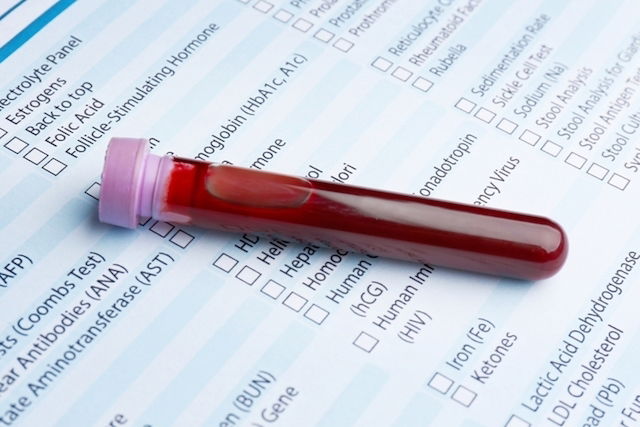An estradiol test looks at the levels of this hormone circulating in the blood. It is used to evaluate the functioning of ovaries in women, and the testes in men, especially in cases of infertility.
Estradiol is the primary form of estrogen, and is used by the body for maturation of sexual organs and the reproductive system. High levels in young boys, for example, may interfere with puberty, while low levels in women of child-bearing age may lead to infertility.
Estradiol levels are generally higher in women than in men, especially during childhood and adolescence. In adulthood, values may fluctuate in women, depending on the menstrual cycle.

Test uses
Estradiol tests can be ordered by a doctor to evaluate fertility in men or women. It may also be ordered to:
- Assess the success of fertility treatment
- Identify whether a young girl has entered puberty
- Investigate ovarian, testicular or supra-renal gland functioning
- Detect estrogen-producing tumors
- Investigate the cause of vaginal bleeding or amenorrhea
In addition to fertility, estradiol can be tested in men to identify a cause for changes in libido.
How to prepare
There is no specific preparation required for estradiol testing. However, some medication can alter levels in the body. The doctor may ask you to discontinue antibiotics, birth control or steroid medication prior to the blood draw.
Some health conditions may also influence estradiol levels, like anemia, high blood pressure, kidney disease or liver disease.
Reference ranges
Estradiol levels should always be interpreted by a doctor, as values can vary due to different factors (like age, sex, health history and menstrual cycle). Reference ranges can vary depending on the lab, but generally speaking, are as follow:
- Adult men: between 11 and 46 pg/mL;
- Women, during follicular phase: between 22.2 and 218 pg/mL
- Women, during ovulation: between 40.3 and 511.3 pg/mL
- Women, during luteal phase: 25.3 and 288.6 pg/dL
- Menopausal women, not on hormonal replacement therapy: up to 47 pg/mL
Estradiol levels can also vary in children due to ages. Boys up to 10 years old will usually have estradiol levels below 20 pg/mL, while girls under 10 will usually be between 6 to 27 pg/mL. It is important for results to be interpreted by a doctor, as findings from the physical assessment and other test results are taken into consideration.
High estradiol levels
High estradiol is usually noted at the beginning of puberty in girls, as the body prepares to develop the reproductive system. High levels in young boys can also be a result of delayed puberty or gynecomastia. High levels in adults can be a sign of tumors in the ovaries, testicles, or suprarenal glands.
Low estradiol levels
Low estradiol is usually more serious in women, as low levels in men are normal. Low levels are usually a sign of Turner’s syndrome, a pituitary dysfunction or menopause. Low levels can also be noted in ovarian disease or in women with polycystic ovarian disease.
